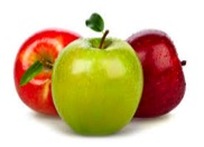 We have all heard of fibre – and we know its good for us. But what does it actually do and where can we get it from?! There are two types of fibre, both essential for helping digestion and preventing disease. The ideal amount of fibre for an adult is at least 35g a day. By eating a high fibre diet you are reducing the risk of diabetes, diverticulosis and bowel cancer. It is best to get daily fibre from a varied diet such as lentils, beans, oats, fruit and lightly cooked or raw vegetables (cooking destroys the fibre in vegetables). Beans and peas contain significant amounts of both soluble and insoluble fibre. SOLUBLE FIBRE SOURCES Soluble fibre is a type of fibre which becomes sticky when added to water. It can help regular bowel movements and reduce the chance of diarrhoea and constipation, improved cholesterol metabolism and blood pressure reduction, prevents quick spikes in your blood sugar, and has been shown to help keep diabetes (1 & 2) under control. Berries: blueberries, blackberries, strawberries Grains: oatmeal, millet, farro, spelt Hard fruit: apples, pears Legumes: beans, lentils, peas Nuts: almonds, cashews, walnuts Seeds: ground flaxseed, chia seeds, pumpkin seeds INSOLUBLE FIBRE SOURCES Insoluble fibre cannot be dissolved in water and helps regular bowel movements and prevent constipation (by increasing stool bulk) and helps promote weight loss. Grains: whole-grain bread, quinoa, brown rice, couscous Vegetables: carrots, celery, zucchini, broccoli, cauliflower, beets, Brussels sprouts, dark Swiss chard, kale, artichokes, sweet potatoes, peas, beans.
0 Comments
Leave a Reply. |
AuthorLouise Cullen Archives
October 2020
Categories
All
|
 RSS Feed
RSS Feed
